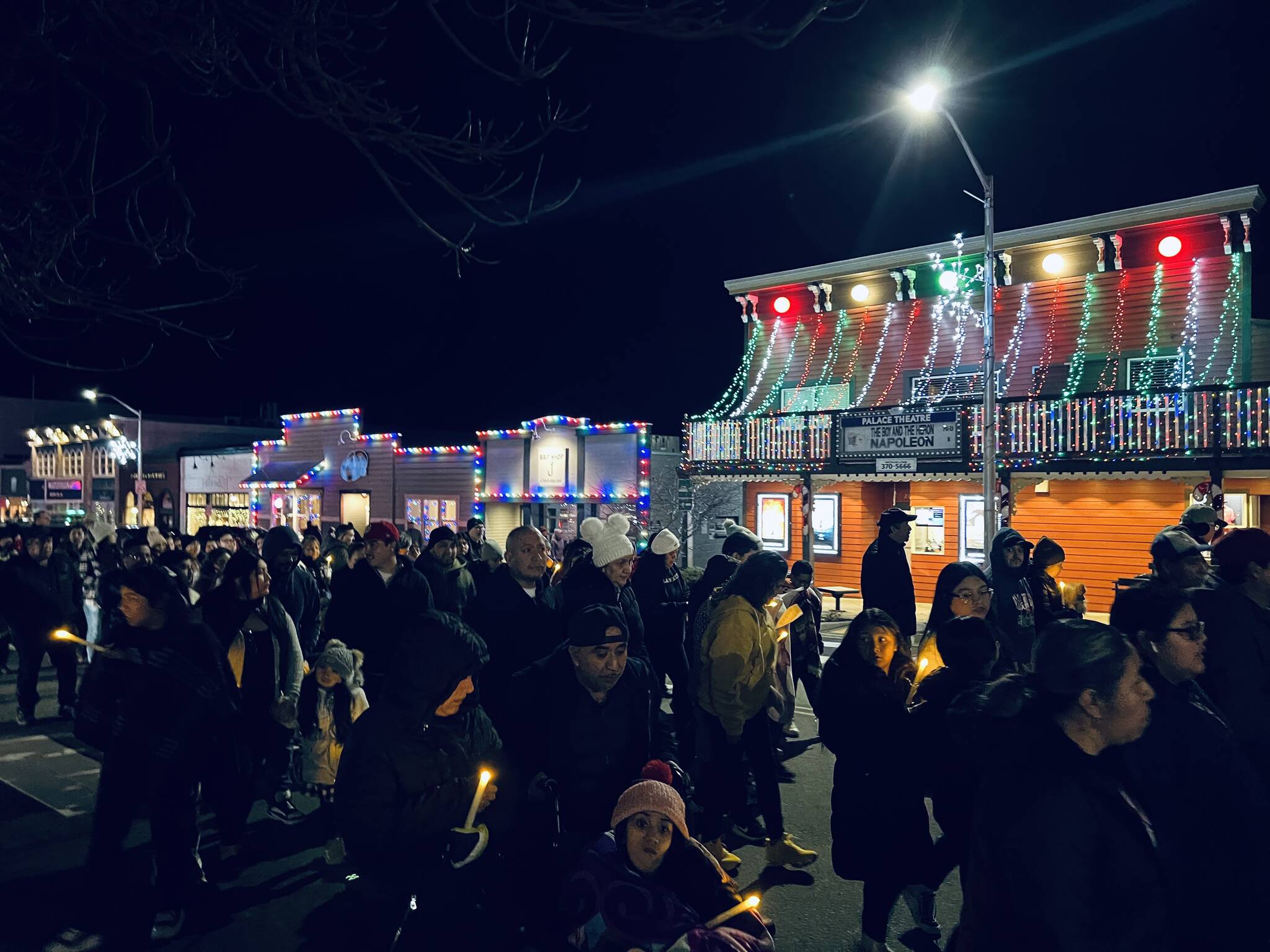By Maria Magana-Navarro
Journal intern
Those living on the island of Friday Harbor may have noticed a sound. The sound of cultural festivities passes through town every year from Dec. 11 through 12. Singing and praying in another language, men dressed up as elders adorned with colorful garments and ribbons, and in the middle of all of it, a statue of a sacred lady dressed in gold and green.
El Dia de la Virgin de Guadalupe is a religious feast day celebrated annually on Dec. 12. The day pays homage to the story of when Mexico’s Patron Saint, the Virgin Mary, paid a visit to an indigenous Mexican farmer in 1531. The legend has been commemorated to this day.
The belief begins on Dec. 9 where the Lady of Guadalupe revealed herself to Juan Diego, a recently converted Aztec peasant. She appeared on top of Tepeyac Hill (now Mexico City) and requested that a shrine be built in her name. The bishop did not believe Juan Diego encountered the sacred lady and demanded proof be brought to him.
By Dec. 12, Juan Diego was searching for a priest to administer rites to his dying uncle when the Virgin Mary visited him once more. Juan Diego told Mary of the bishop’s answer and she instructed him to collect roses to present to the bishop. She also promised she would cure his uncle of sickness. To Diego’s surprise, in the midst of winter, he found many roses on the hill.
When appearing before the bishop a second time, he opened his tilma and dozens of roses fell out, along with an image of Mary imprinted on the cloak. The bishop immediately ordered for a church to be constructed, and Juan Diego returned home to find his uncle cured.
La Virgin de Guadalupe holds a sacred place in the religious life of Mexico as she’s also a national symbol for the country. Her presence has even reached people of Mexican descent who live in U.S. communities and attend churches. To this day, they come together to celebrate Our Lady.
The tradition is celebrated in Friday Harbor through community involvement and meticulous planning. Every year, a committee is chosen to plan the event. The planning begins a year in advance when fundraisers start to raise money. People then come together to plan the food and reserve the music and venue.
Along with intensive planning, in December families host community Rosario’s, a religious ceremony preparing for the day Mary arrives, and patiently waiting for the day.
As done every year, on Dec. 11 the community gathers at the docks to begin a procession through town. The men take turns holding a statue of the lady while the rest sing prayer through song. During a ceremonial procession, the community walks from the docks to the Catholic Church honoring Our Lady. The procession frequently stops along the journey, giving opportunity for the men and women to dance.
This dance is known as La Danza de Los Viejitos, or the Dance of the Little Old Men. Los Viejitos is a traditional folk dance from the state of Michoacán. Originating from pre-colonial times, the dance was started by the indigenous people of Michoacán, the Purépecha. The dance is originally said to honor the ‘Old God,’ but became modernized as a form of entertainment and comedy.
Once the procession arrives at the church, the Viejitos do one last dance before everyone makes their way inside the church for the Rosario. The church is beautiful, as it’s decorated with candles, flowers, and papel picado: chopped paper with panels cut into intricate designs.
After the procession is done, there is food and drinks for the community in the hall next to the church. Foods such as posole accompanied with beverages such as atole, ponche, are common.
The second day, Dec. 12, is the most festive day. The church is the same as mass, as is customary, however, this time paired with a mariachi band. Mass is longer the second day as right after there’s a party. Mariachi music and those of different backgrounds make their way to the Mullis Center. A delicious dinner is served, and thanks are given out to the community organizers, to Our Lady and thanks for everyone who made the holiday possible. Later into the night there is more dancing.
The day is a festive and joyful celebration that unites the community and brings those in from different backgrounds as well. Anybody can partake in the celebration of Our Lady.
El Dia de La Virgen is an important holiday to the people of Mexico as it’s a religious feast day honoring our Lady of Guadalupe. However, the day serves as an even more important reminder of the Mexican presence in America celebrating religious and cultural identity.



